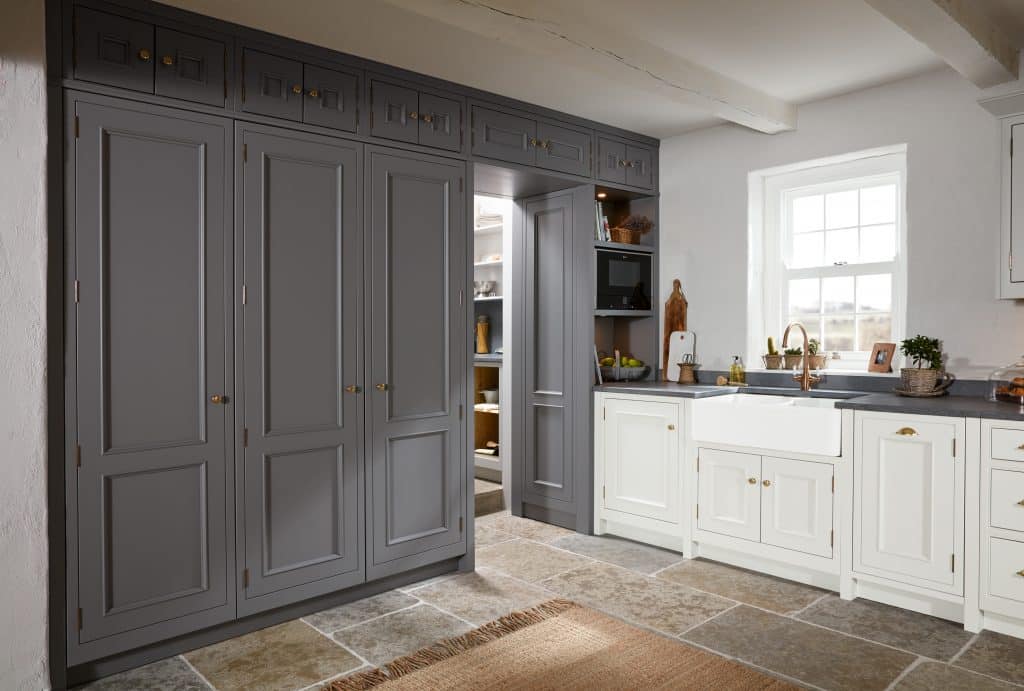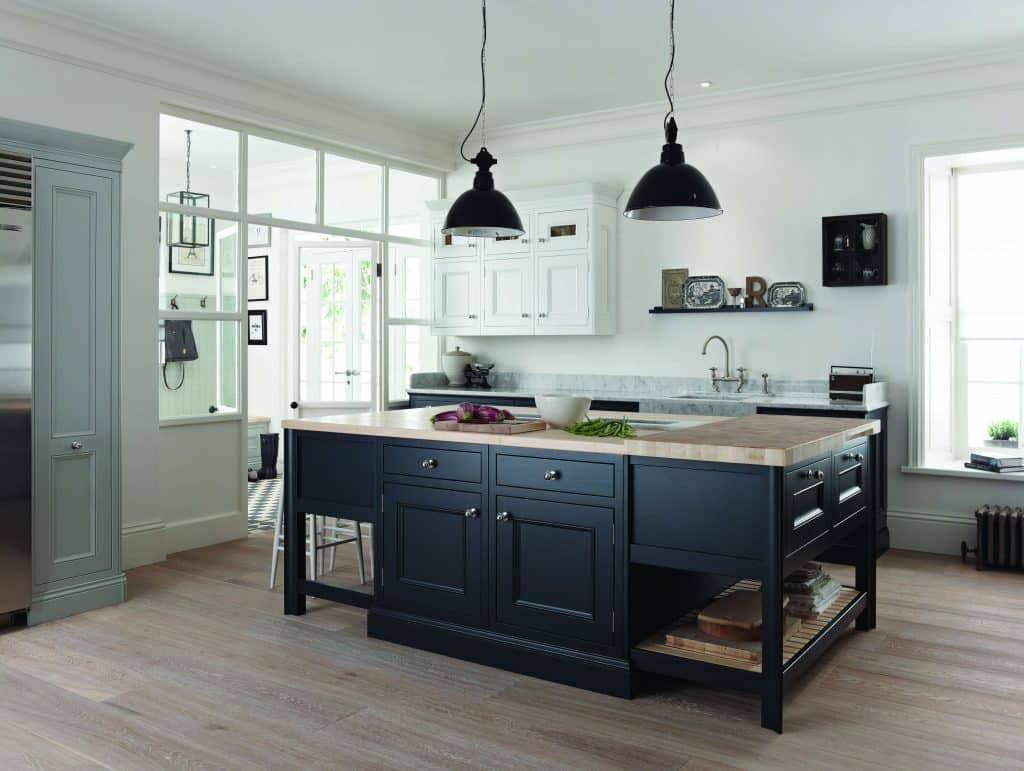Pairing sash windows with bespoke heritage kitchens
As a period homeowner, you’re a custodian of original features. So you’ll know how crucial it is to care for the authentic details, which define the history of your home. Sash windows are one of the most important features in any historical building and it’s likely that you’ve had to carry out repairs, maintenance or restoration to keep them looking their best. When it comes to upgrading or renovating your interior, it’s also important to look to the era of your property for inspiration.
Upgrading your home? Here’s where history comes in
Flooring, fireplaces and coving may all have been removed or become damaged over the years. So when the time comes for you to replace them, you can scour auction rooms, salvage warehouses and the Internet to find pieces from the right era. But sometimes you’ll have to introduce new fittings and fixtures – like kitchens and bathrooms. And here’s where it pays to work with an expert to ensure the design you choose is in-keeping with your property.
So what style should you go for?
Installing a new kitchen is one of the biggest investments you’ll make in your heritage property so the first step is to decide what style to go for. If you’re not sure what era your home is from, take a look at your sash windows for clues. Georgian sash windows have ‘six over six’ smaller panes, Victorian sash windows may be finished with horn and moulding detail, and Edwardian sash windows often feature ‘six over two’ panes in their design. Now you can move on to creating a kitchen that will complement your home.
Creating a kitchen for a Georgian property
To get the look of a Georgian style kitchen, go for a single matt colour on your cabinets and walls. Bold greys and blues were popular in the early part of this era; pale tones of beige and stone are typical of the later Georgian years – so you have the freedom to choose your favourite. Add a mantel over a stove, with classical corbels to give the room an elegant feel – this is also the ideal spot to locate an extractor fan. Marble worktops complete the look, creating an authentic aesthetic and a high quality finish. Butlers or Belfast sinks are also typical of this time, but you could choose brass or copper rather than traditional ceramic to give your kitchen an on-trend feel. A bespoke kitchen gives you the opportunity to have cabinets built to fit floor to ceiling – suiting the generous high ceilings of a Georgian property.

Victorian kitchen design ideas
Wood surfaces, copper taps and cream cupboards typify Victorian kitchens, which were bright and airy. Cabinetry in this era was often freestanding – and while you may not want a completely freestanding kitchen, you could incorporate elements of this into your design, like a butler’s pantry or spacious island, for maximum wow-factor. The Victorians also loved grand detail so don’t skimp on flourishes like elaborate moulding or oversized range cookers. Range cookers are a key feature – why not opt for one finished in a bold colour to add a contemporary twist to your space? The sheer size of many Victorian kitchens means that dining areas can be included – perfect for modern living where rooms are used for cooking, dining, working from home and relaxing. Open shelving is also typical of the time – having this made as part of your bespoke kitchen ensures the colour and design touches are seamless.

How to get the look of an Edwardian kitchen
Edwardian kitchens move away from the ornate opulence of the Victorian era so the look is more simple and elegant. Linoleum on the floor and tiled walls became popular, so the space could be kept clean – a glass splashback is a contemporary interpretation, that you may wish to consider. Glass-fronted cupboards replace open shelving – and the built-in kitchen style that we know today becomes more prevalent. As running water was widely available, sinks are a focal point of Edwardian kitchens. White enamelled iron, granite and slate sinks were popular then – and these are all perfect for modern homes. Kitchens were still often white, but strong colours were introduced for floors and furniture – kitchens today can translate this onto wall colours or accessories for an authentic feel with a modern twist.
Finding the right bespoke heritage-style kitchen
The best way to create a kitchen that ties in with the period features of your home is to work with a specialist company, who can offer you a design service that draws on heritage expertise. They will be able to advise on the perfect kitchen, incorporating sympathetic design details, layouts suited to modern lifestyles and all the finishing touches you need. Expertly crafting your kitchen from high-quality and sustainable timber, the right company will offer you a palette of period-inspired colours, hardware that’s as beautiful as it is functional and the latest appliances to deliver that perfect blend of bespoke style and modern practicality.
Sash windows combined with a heritage kitchen design can help to complement the overall aesthetic and historical accuracy of space within the home. At Ventrolla, we are both experts in sash windows and custodians of heritage details. Sympathetic restoration is the most important service we offer, but we’re also specialists in discreet modern upgrades – integrating draught-proofing, slim double glazing or secondary glazing.
Where a window is beyond repair, our crafted timber windows can be made to replicate the original, keeping the authenticity of your property intact. It’s worth noting, that for properties in conservation areas or for Listed Buildings, our work is carried out in line with the relevant controls and restrictions. If you’d like to discuss how your sash windows, paired with your heritage kitchen design can improve the overall aesthetic and historical accuracy within your home, contact our team today.
